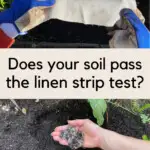
Do you like conducting experiments? Are you intrigued by the idea that underwear has something to do with gardening? I was, too, my friend. Keep reading.
I wasn’t a big fan of experiments in chemistry class, mostly because we weren’t allowed to touch anything and the fun part would invariably be followed by a blackboard full of dizzying formulas.
But when it comes to gardening, my school-days self would be astonished to find out how much I enjoy experimenting now. So much so that one of my favorite gardening “tools” is a notebook I keep full of new ideas I would like to try out.
Just try and see what happens seems to be my gardening motto now.
Here’s what happened during my latest experiment, all about testing to see how active my soil is.
The premise of the test.
If our soil is active, then every handful of soil has billions of fungi, microbes and bacteria constantly at work consuming organic matter. You can’t see them with the naked eye, and it’s hard to measure them without a microscope, but they’ll make their presence known in this fun little experiment.
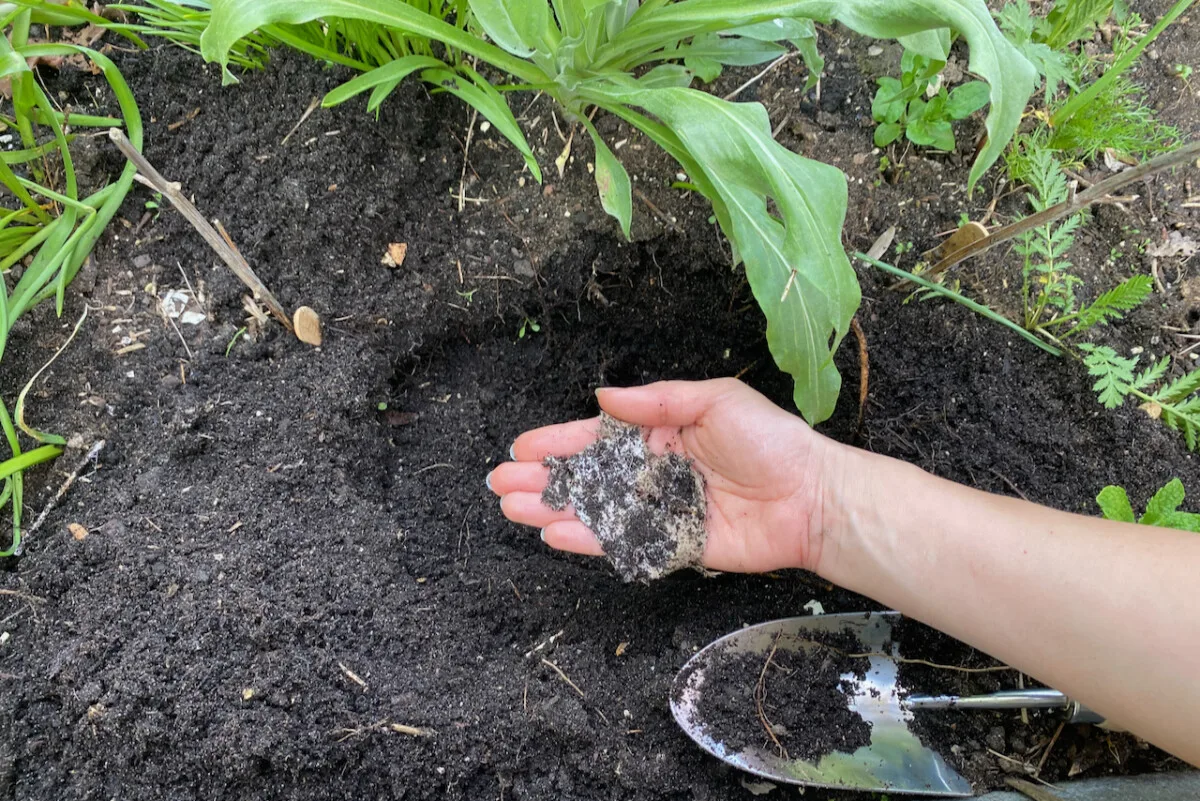
The Underwear Test
According to the notes in my gardening notebook, I first read about this “test” in an article in Horticulture magazine (though I didn’t write down what issue, sorry).
The author was going through several types of tests that you can conduct to see how healthy your soil is. From the squeeze test to the earthworm-counting test to the “see how fast your soil absorbs water using an empty coffee can” test.
The one method that sounded the most interesting to me was called the undie test. Yes, unmentionables.
You’re supposed to bury a cotton pair and see whether there’s anything left after six weeks. If your soil is teeming with good microbes, at the end of the six weeks, you’re supposed to be left with only the elastic (just because it’s petroleum-based and not exactly an organic delicacy).
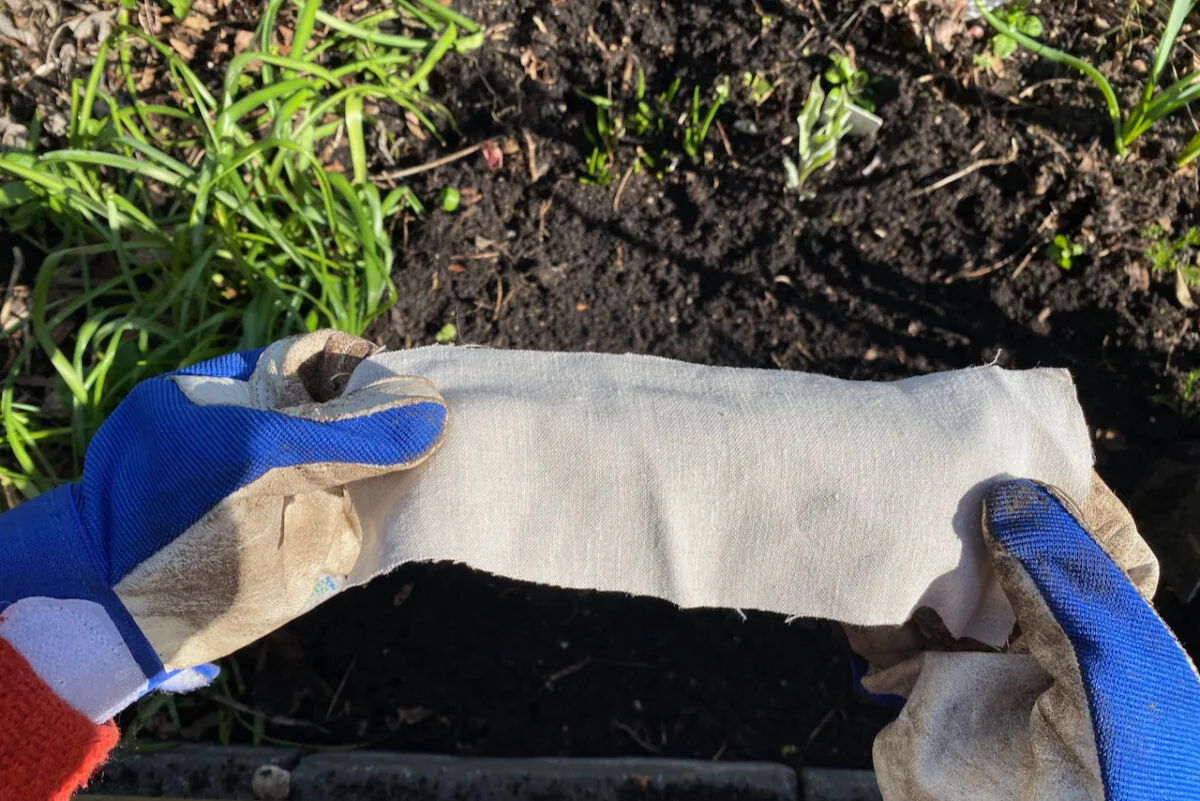
Now, I really wanted to replicate this, but under no circumstances would I use underwear … for a myriad of reasons.
But to keep it brief (Ha!), I wanted to make sure the fabric I buried would be one hundred percent natural fiber. So linen was the obvious choice.
Another reason to keep it “clean” would be if you wanted to run the experiment with kids. There’s little explaining to do at school if you’re just using a piece of linen, right?
You go right ahead and bury your undies in your garden if you like, but for myself, I’ll refer to this as the Linen Test.
What do I need for the linen test?
You only need one strip of linen, markers and a hand shovel.
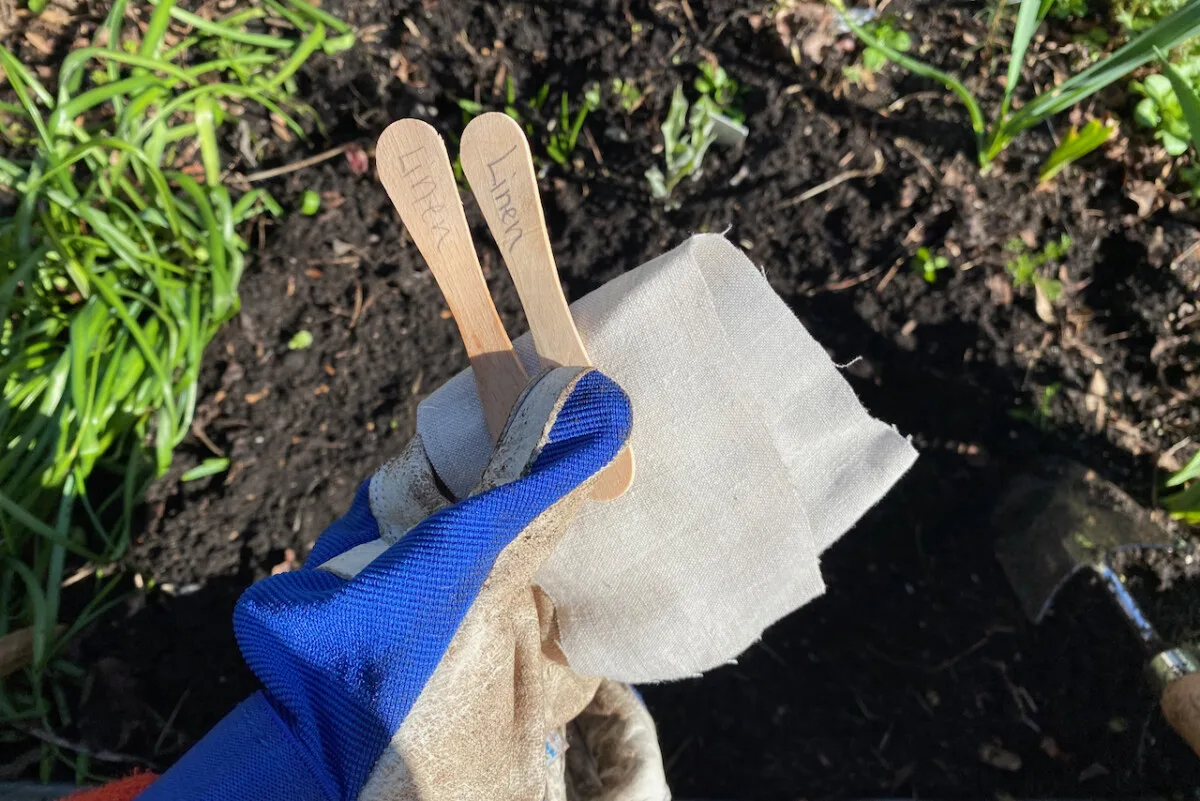
Since I needed to bury the linen six inches deep (15 cm) for six weeks, I chose a piece of fabric that was six inches long. Just to keep it simple.
For markers, I used two popsicle sticks.
When can I do the linen test?
Any time you want, provided you have a patch of soil that you can leave undisturbed for six weeks. I did the test before the growing season started because I knew I wouldn’t need to dig around it just yet.
I buried the fabric in early March, put a reminder in my calendar for six weeks later, then dug everything out in the third week of April.
How does the linen test work?
Step 1: Bury the fabric in the ground.
Well, you have to start by getting that linen strip in the ground. Dig a hole about six inches deep and place your fabric there. For it to decompose, it has to be natural fabric. So either pure linen or one hundred percent cotton would do.
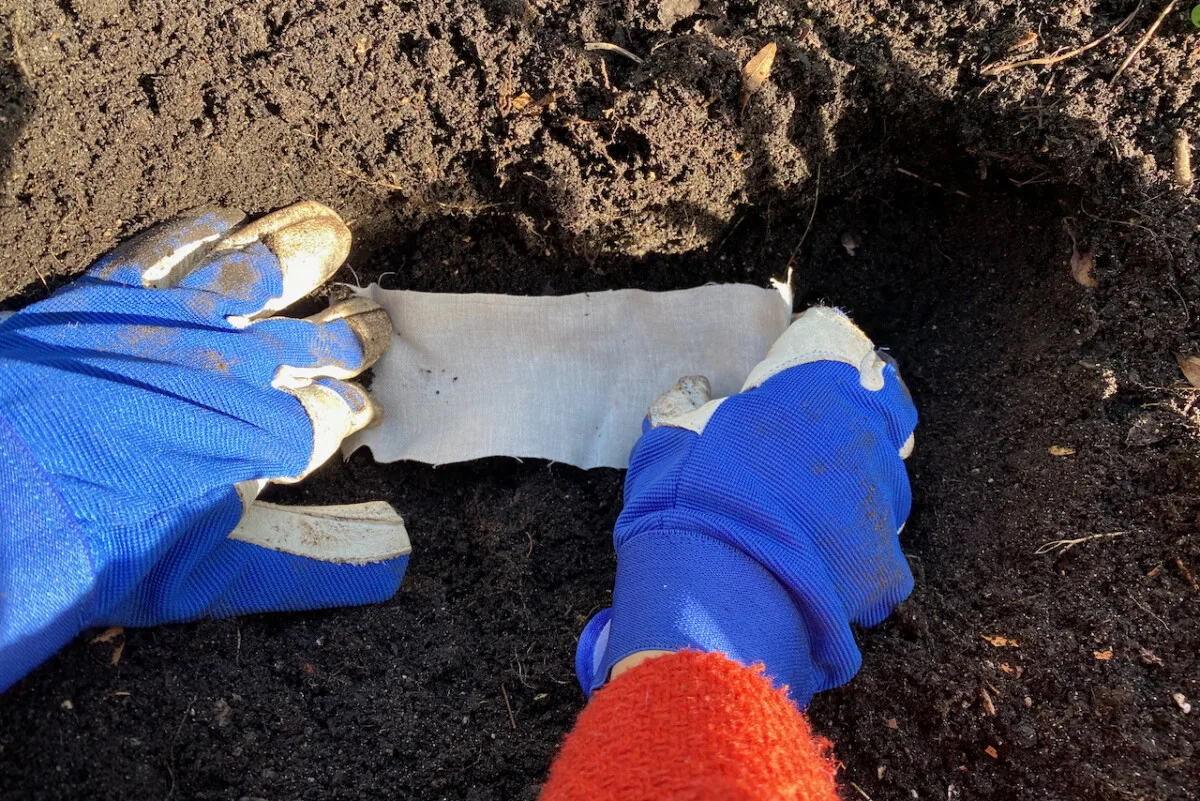
But stay away from polyester blends or anything containing synthetic fibers such as elastane or acrylic. Even if it’s a blend, the cotton part will be consumed, but you’ll contaminate your soil with the microplastic particles left behind from synthetic fabrics.
Once you’ve stretched out the piece of fabric, cover it up with soil until you’ve filled up the hole at the same level you started with.
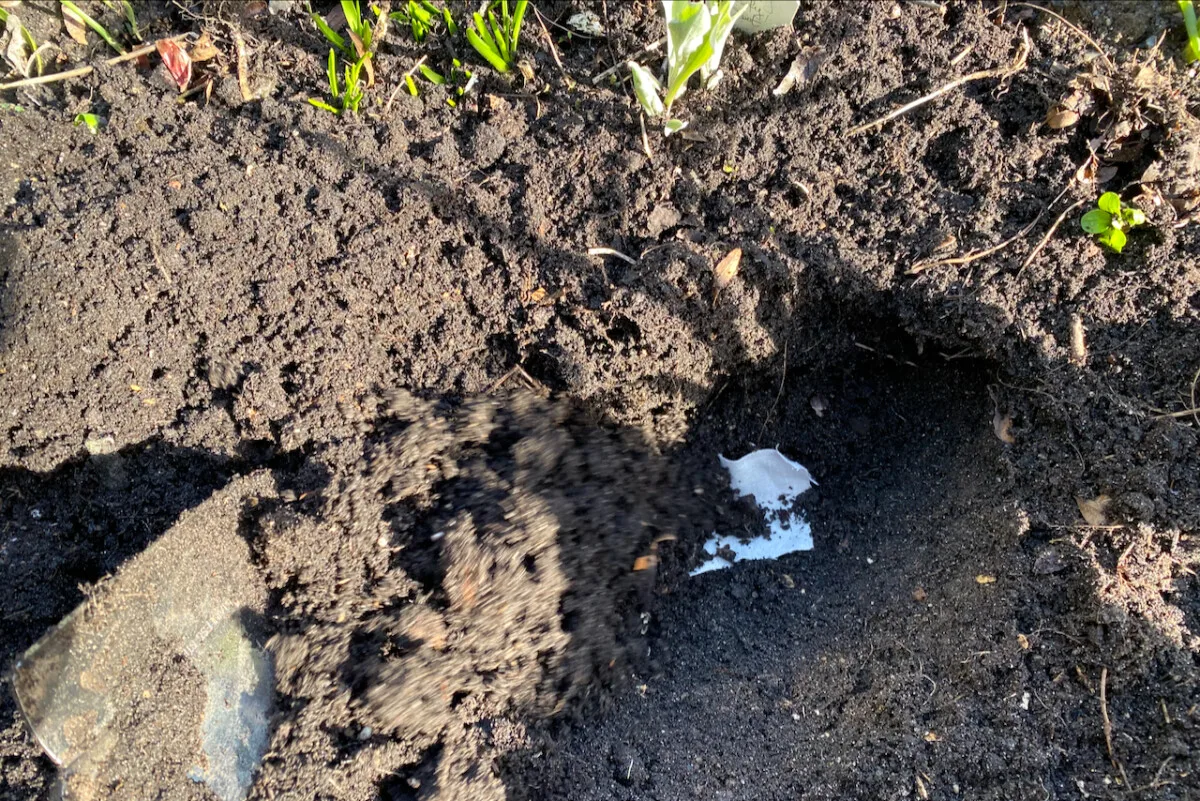
Add some markers as a reminder of where you buried the linen. I used two wooden popsicle sticks at first. A couple of weeks later, I had to add two taller stick markers because the popsicles were somewhat sinking after a few weeks of daily rain. Such is March for me in my gardening zone.
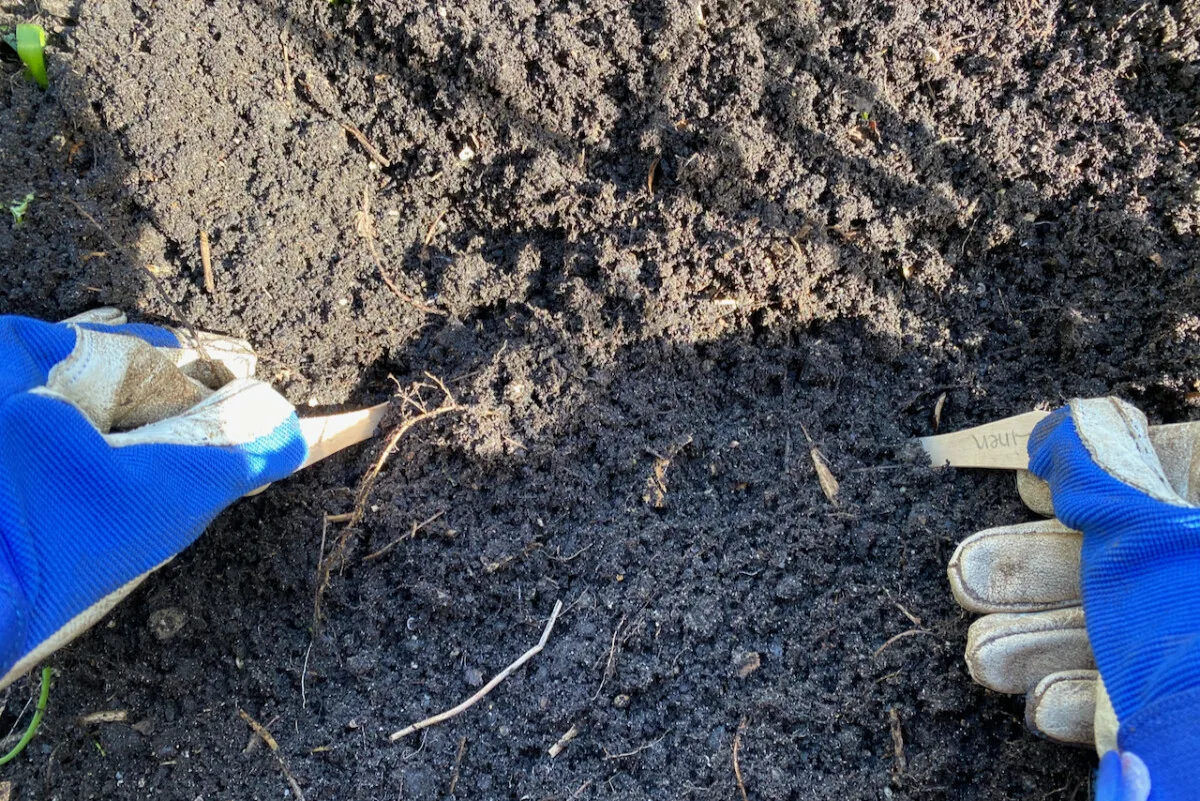
Step 2: Wait six weeks.
That’s the gist of it. Add the end date to your calendar six weeks from now and wait patiently. No peeking to see what’s going on underground in the meantime.
Step 3: Dig everything out.
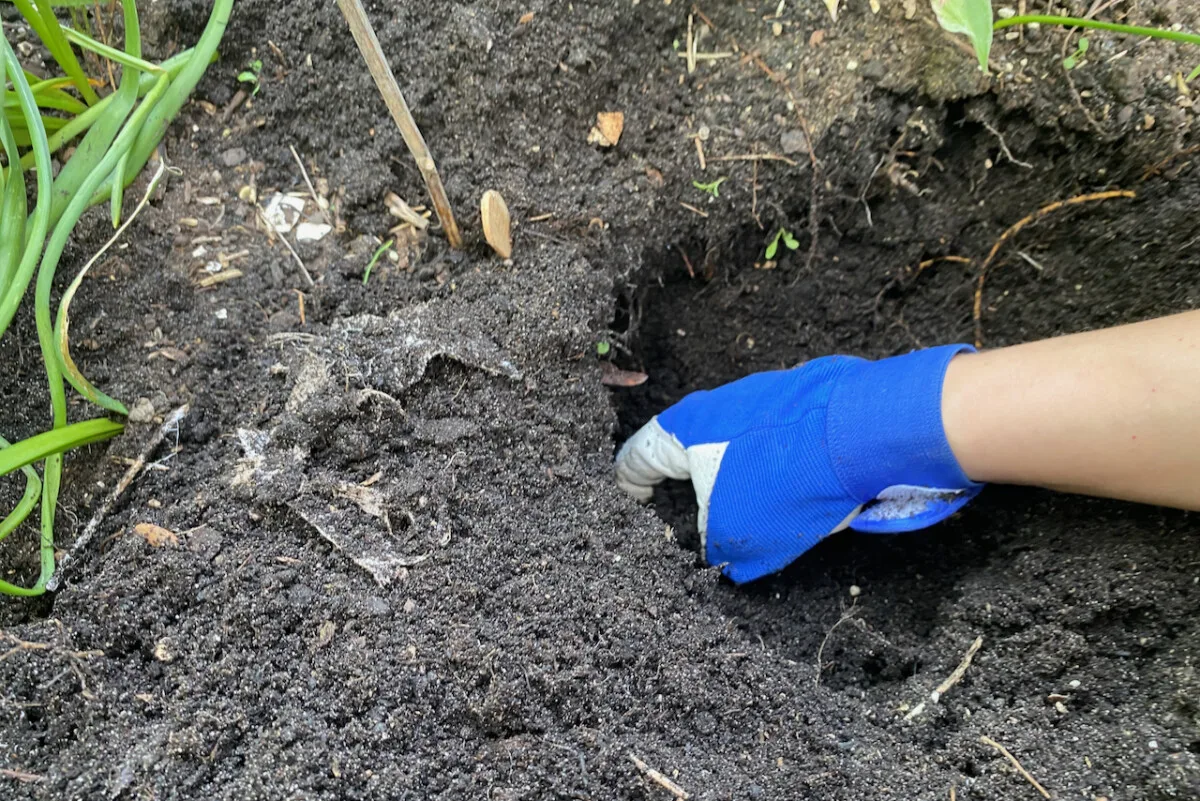
I knew this experiment would work. I just didn’t realize how well it would work. So much so that I had to do quite a bit of digging around and sifting the soil to find the first scrap of linen.
If I didn’t have the markers pointing to the right spot, I would have given up looking in this location. It was that decomposed.
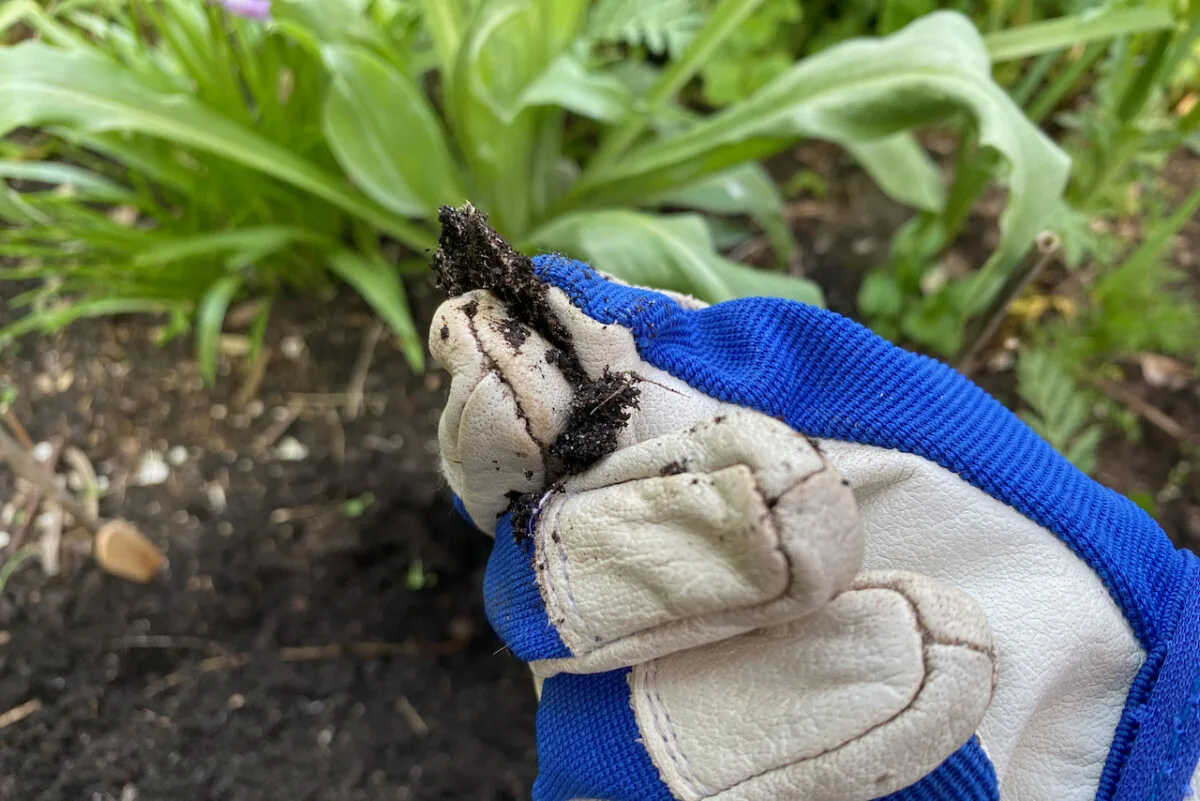
This is what was left of it at first glance. A scrap the size of my (gloved) thumb.
After more diligent digging and sifting, I found a few more pieces of frayed linen. Overall, I’d say I ended up with about ten or fifteen percent of the fabric I started with. But even these leftovers were seriously threadbare.
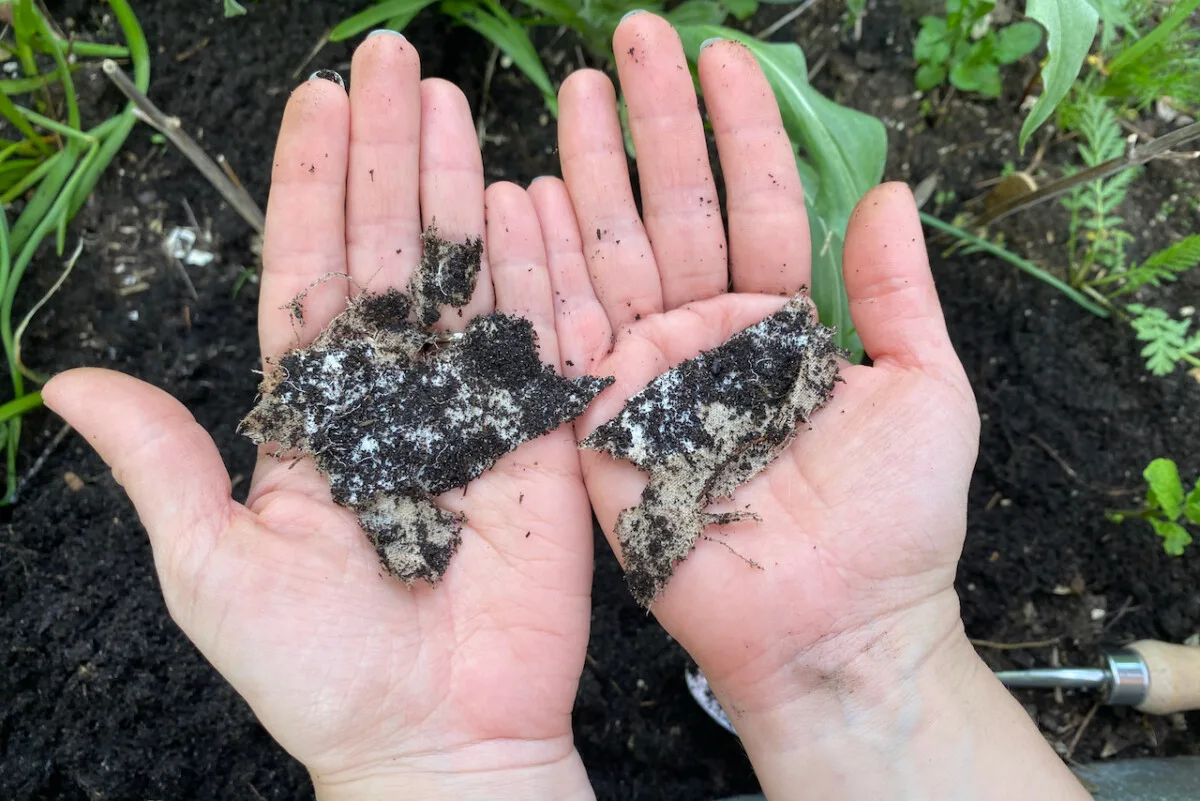
Equally satisfying was how well the mycelium had adhered to the popsicle stick markers in only six weeks. Again, an indication of biodiverse and healthy soil.
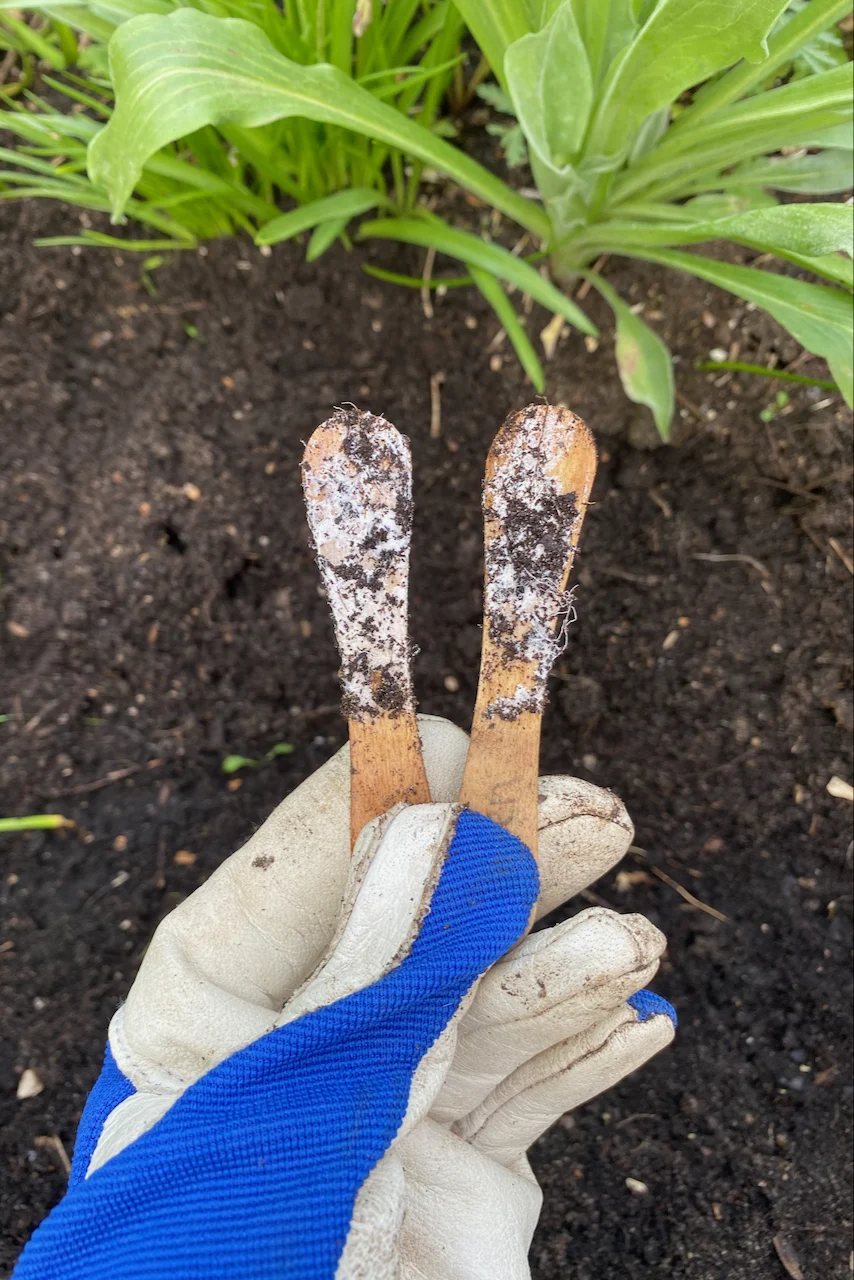
What does this linen test tell me?
Obviously, it’s not an accurate scientific measurement. But it tells me that my soil is teeming with bacteria, microbes and fungi that are constantly consuming organic matter. I already knew this from my practice of composting in place, but it was a much-needed reminder that healthy soil is permanently active.
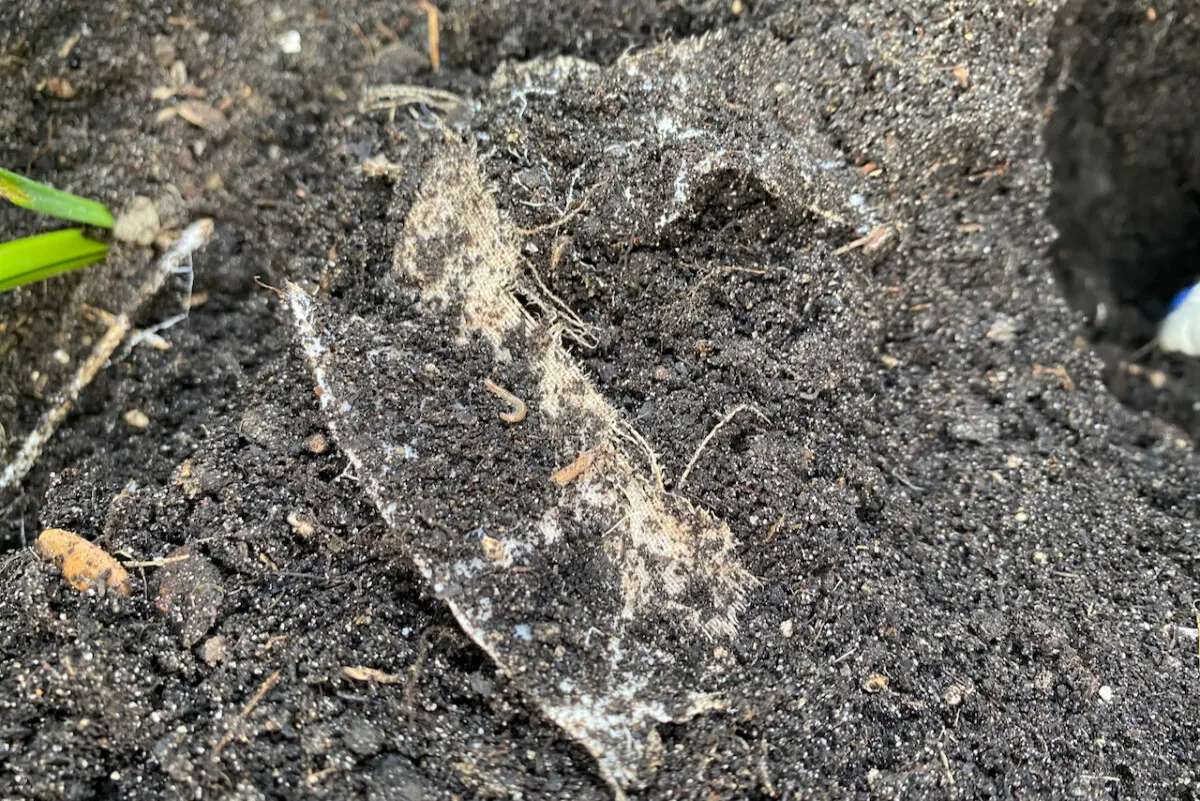
Overall, it’s a great experiment to conduct, for kids and adults alike, and all you need is a piece of linen. Or underwear. It’s your choice.
If you want to keep experimenting with soil (are you even gardening if you’re not dirt-curious), have a look at this article in which Tracey walks us through all sorts of fun and telling tests.

Get the famous Rural Sprout newsletter delivered to your inbox.
Including Sunday ramblings from our editor, Tracey, as well as “What’s Up Wednesday” our roundup of what’s in season and new article updates and alerts.


